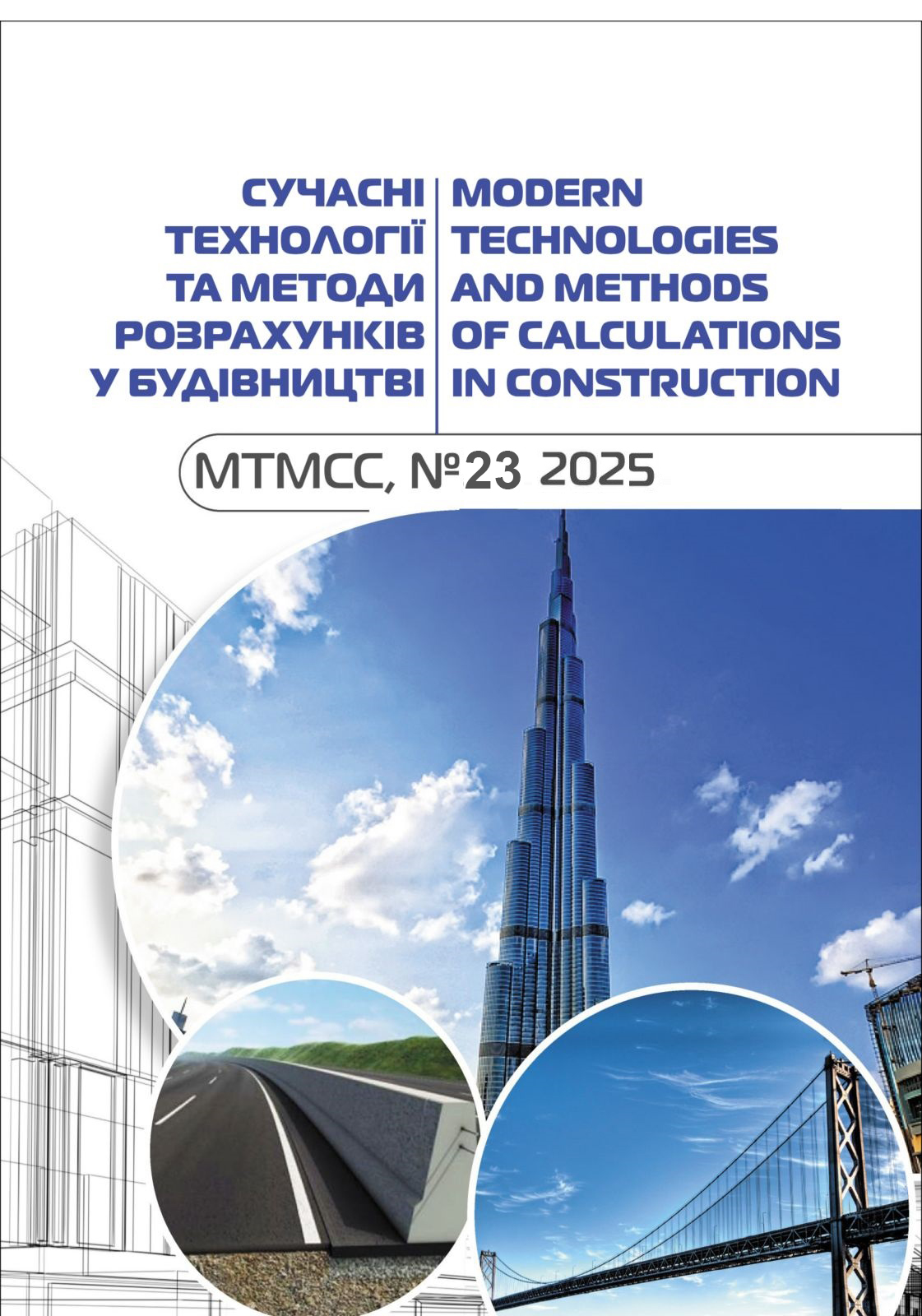Full-Scale Experiment and Numerical Modeling of Beam Bending with Constructional Camber
Abstract
An experimental study was conducted to evaluate the effectiveness of beams with constructional camber. A custom test rig was developed and assembled to carry out full-scale investigations of beam deflection. Beam specimens were fabricated using FDM 3D printing technology from coPET material. Three types of experimental beam specimens were produced: with a straight axis (model beam), and with 100% and 200% camber. The experimental setup simulated the behavior of a two-span beam with fixed ends subjected to a central point load. The deflection under load was measured. Load tests were performed on the experimental beams with an applied force ranging from F = 0 to 200 N in increments of ΔF = 10 N. Diagrams were constructed to show the relationship between the deflection of the model and cambered beams under various loading conditions. A zero-deflection beam effect was observed. To verify the experimental findings, the behavior of the tested beams was also analyzed analytically and numerically. Analytical modeling enabled the adjustment of the elastic modulus to account for the material structure produced by 3D printing. The results obtained from numerical simulations in the LIRA software package showed good agreement with both the experimental and analytical results. Visualization was performed using FUSION software, where colored diagrams illustrated the deflection distribution along the beam length and demonstrated the efficiency of cambered beams in reducing deflections with increasing constructional camber. The research contributes to the study of constructional camber effects. The objective of the study is to develop practical technologies for applying constructional camber in real-world construction. The feasibility of using 3D printing technology for full-scale modeling of structural elements in buildings was demonstrated. A correlation was noted between the mechanical properties of 3D printed structures and the printing mode and filament parameters.








